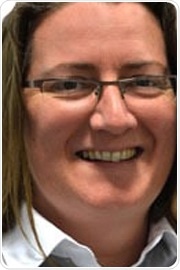An interview with Dr. Kate Hudson-Farmer about the methods used to discover new uses for old drugs.
Why is it important to find new uses for old drugs?
Many older drugs are well understood from a safety perspective and have often been used successfully off label for other indications. This off-label use can be turned to on-label use through physician led trials.
In general, but not always, it can be a lower cost and shorter time to approval for these drugs in these alternative indications. So finding new uses for older drugs can have important benefits from both a patient and an economic perspective.
 Video_Creative | Shutterstock
Video_Creative | Shutterstock
What features make an old drug likely to have alternative uses?
This very much depends on the actual mode of action of the drug, what receptors it works on in the body and the site of action.
It depends on how widely a drug is used and the breadth of a population it is used in. The more widely it is used and the broader the population, the higher the potential to notice a trend in an alternative or side effect the drug may be having.
Being able to spot these side effects, and whether these have a positive impact on a condition a population has, may then lead to the drug being thought of to treat that condition.
Please can you outline how Cambridge Consultants have aided Clinigen Group to identify new market applications for drugs near the end of their product lifecycle?
We initially built an extensive database of approximately 4,000 drugs. Using an objective-based process, we developed criteria with Clinigen based on strategic and market needs.
We used this to narrow down the long list of drugs to nearly a couple of hundred. We then shortlisted 20 drugs for more in-depth evaluation, which included interviews with key opinion leaders and analysis of clinical data.
We essentially developed a robust and effective process with Clinigen, specific to its needs, in terms of identifying drugs to bring to market faster based on consistent and measured market analysis.
What are the main challenges in arriving at new functions for old drugs?
One of the main challenges is sifting through side effects of a drug for one indication to see if they provide enough of a benefit to a patient group with a different indication without causing side effects that outweigh the benefits to this new patient group.
So, in other words, there is a therapeutic benefit/side effect trade-off to consider in the new patient group.
How important do you think breathing new life into old drugs will be in the future?
Very important. There is immense pressure on cost containment across the pharmaceutical industry and within healthcare systems globally.
Being able to find new indications for existing drugs is a valuable exercise as the cost, generally, to bring an old drug to market for a new condition can be lower than developing a new drug.
What are Cambridge Consultants plans for the future?
To continue to work with pharmaceutical and medical technology companies on interesting technical and commercial consulting, and design and product development assignments concerning the challenges facing the industry.
Where can readers find more information?
Readers can visit the Cambridge Consultants for more information.
About Dr. Kate Hudson-Farmer
 Dr. Kate Hudson-Farmer has over 15 years’ experience in the healthcare sector from a strategy and business development perspective.
Dr. Kate Hudson-Farmer has over 15 years’ experience in the healthcare sector from a strategy and business development perspective.
She is a Senior Consultant at Cambridge Consultants focused on strategic market analysis for pharmaceutical and medical technology companies.
She has worked with numerous leading companies developing and executing acquisition strategies, conducting due diligence, market modeling, expansion, positioning, and launch strategies.
Prior to Cambridge Consultants, she worked in technology transfer and business development, executing early-stage licensing and new company start-up deals for biomedical and pharmaceutical products.
She has a Ph.D. in molecular microbiology from the University of Sheffield and an MBA from Nottingham University Business School.